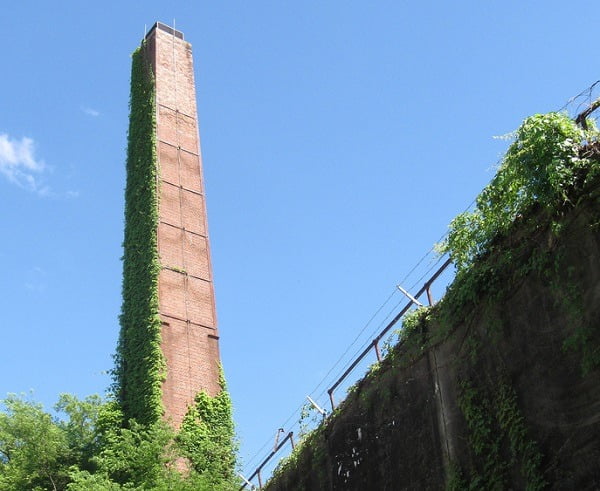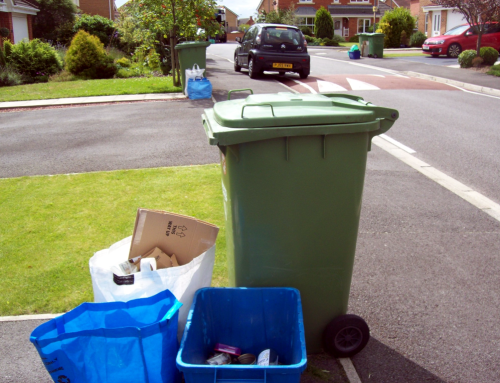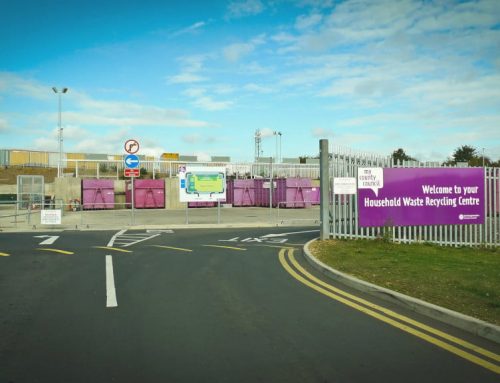by Adam Baddeley and Chris Cullen
6 minute read
Many people in the waste sector have spent their careers managing seemingly ever-increasing quantities of residual waste. Efforts over the last fifteen years have focused on diverting it away from landfill. For those grappling with this problem, it can be difficult to believe that we’re rapidly approaching a point where we’ll be worrying about a lack of residual waste to feed the treatment facilities we’ve built to achieve this goal.
Eunomia’s bi-annual Residual Waste Infrastructure Review (RWIR) monitors constructed and planned treatment capacity, and gives projections of residual waste arisings. Issue 8 was published in June and reported that UK residual treatment capacity continues to grow:
- 1 million tonnes per annum (tpa) of capacity is now operational;
- 7m tpa is under construction; and
- a further 0.8m tpa has reached financial close and is due to start construction soon.
These figures all take account of the ‘double-counting’ effects of MBT and most other pre-treatment facilities.
Bull market
Fewer new developments are entering planning than previously, but millions of tpa worth of projects have had planning consent for several years. Some of these have recently reached financial close and are starting construction. Where old facilities have reached the end of their effective life, they’re being retrofitted or replaced, rather than being decommissioned.
Several merchant facilities without the backing of long-term local authority waste supply contracts are amongst those now reaching financial close. The confidence of lenders and investors has been boosted as facilities have secured merchant contracts of up to 10 years on the back of competitive gate fees, made possible by “renewable energy” incentives (the Renewable Obligation, Contracts for Difference).
Defra’s retreat from supporting waste treatment through PFI doesn’t seem to have dampened down the market, while the Green Investment Bank has stepped in to help fill the funding gap. The indications are of a substantial potential pipeline of new capacity for several years ahead.
Hot competition
Exports of refuse derived fuel (RDF), however, are increasing competition for feedstock. The additional capacity they offer has suppressed gate fees, especially for commercial waste, and may be causing some investors to have second thoughts. There has been considerable recent discussion of whether exports have peaked. Our assessment of the preliminary Environment Agency data indicates that exports from England are 15-20% higher than this time last year.

Data sourced from: Environment Agency, Natural Resources Wales, Scottish Environmental Protection Agency, and Department of Environment Northern Ireland.
Our Northern European neighbours aren’t looking to close their infrastructure, any more than we are, and higher recycling targets will leave them hungrier for feedstock – consider the position of Denmark, which recycles just over 20% of waste, and incinerates much of the rest to produce 20% of its heat and 5% of its electricity. The established, efficient combined heat and power facilities to which many exports go could probably survive on lower gate fees than they currently earn. It is therefore likely that exports will continue to increase, at least moderately, while the market remains as it is.
However, our expectation is that significant changes are on the near horizon. The RWIR shows that the supply of residual waste must continue to decline from its current level of around 25m tpa for the UK to reach its recycling targets. The UK is already committed to reaching 50% recycling of municipal waste by 2020. That will leave us with only around 21m tpa of residual waste to manage.
What do EU expect?
Meanwhile, Brussels is holding a second consultation on the Circular Economy Package, but this time recycling targets are not part of the discussion. That suggests the previously proposed municipal waste recycling target of 70% by 2030 is unlikely to change much, particularly given the avowed intent that the new package should be more (not less) ambitious.
Assuming linear progress towards these targets, the quantity of residual waste will be less than the already committed treatment capacity by 2021 – sooner if more infrastructure reaches financial close, or if waste is still being exported. The extent of over-capacity will increase thereafter: even allowing for growth in overall arisings, a 70% recycling rate in 2030 (within the projected lifespan of most UK incinerators) would leave only c.11m tpa of residual waste to feed over 20m tpa of treatment capacity.
Some might argue that, with a referendum on EU membership in the offing, it is rash to assume the UK will have to meet these targets. But other non-EU countries that have secured free trade deals (e.g. Norway, Switzerland) had to accept Waste Framework Directive (WFD) standards. Would the UK get a less demanding deal?
Grate upheaval
Overinvestment in EfW and the clear direction of travel signalled by the European Commission are putting the UK on a path to overcapacity. In the long term, this could mean a genuinely competitive residual waste treatment market.

Green infrastructure? Might overcapacity mean trouble for uncompetitive incinerators? Photo by Bunny Jager (CC BY-SA 2.0), via Flickr
However, full-scale competition remains a somewhat distant prospect, thanks to the long-term, high-price deals that many local authorities and some commercial operators have signed. Facilities backed by secure income streams will be able to turn a profit, even operating below capacity. They should not be complacent, though – in a falling market, they will come under pressure to renegotiate, as clients realise that (even with contract penalties) they could save money elsewhere.
Instead of market-wide competition, in the very near future we will start to see savage cuts in the price charged for the marginal capacity of treatment facilities, as they seek to hoover up any material that remains uncommitted. Landfill Tax places a definite floor on how far landfill operators can drop prices; it is far less clear what the lowest cost may be at which it makes sense for an incinerator operator to pull in waste. We’ll go through a period of rock bottom prices, and residual waste businesses with greater exposure to the market will fail. Meanwhile, the financial incentive to recycle (for businesses in particular) will be weakened.
Fire escape?
So what can be done to manage this impending problem?
- Defra must not twiddle its thumbs any longer, but should send a clear signal by turning its attention to supporting recycling. It could start by properly implementing the waste hierarchy.
- The waste sector needs to recognise that the issue is both real and urgent, instead of trying to talk up the EfW market.
- The short term bonus of reaching financial close should not override appreciation of medium-term risk.
- We must realise that each new treatment facility represents a further barrier to our recycling ambitions a decade from now.
- Where interim treatment capacity is needed, it should be sought from spare capacity domestically and overseas. We could have used the export market to a much greater extent to avoid unnecessary expenditure on EfW, allowing us to instead invest in the infrastructure needed to increase recycling and reuse.
- We urgently need to consider how we will manage an emerging competitive residual waste market that could undermine the financial rationale for recycling. Measures such as an incineration tax (both for domestic EfW and RDF exports) might be considered as a way to help prevent gate fees from plummeting to harmfully low levels.
It might already be too late to avoid throwing good money after bad, but the extent of the rupture to be confronted will be reduced if we act now and rethink our priorities. Those currently developing residual waste infrastructure face particularly uncomfortable decisions, since the more we build, the more likely and more severe the predictable crash in the market will be.
This article first appeared in the CIWM Journal.







Leave A Comment